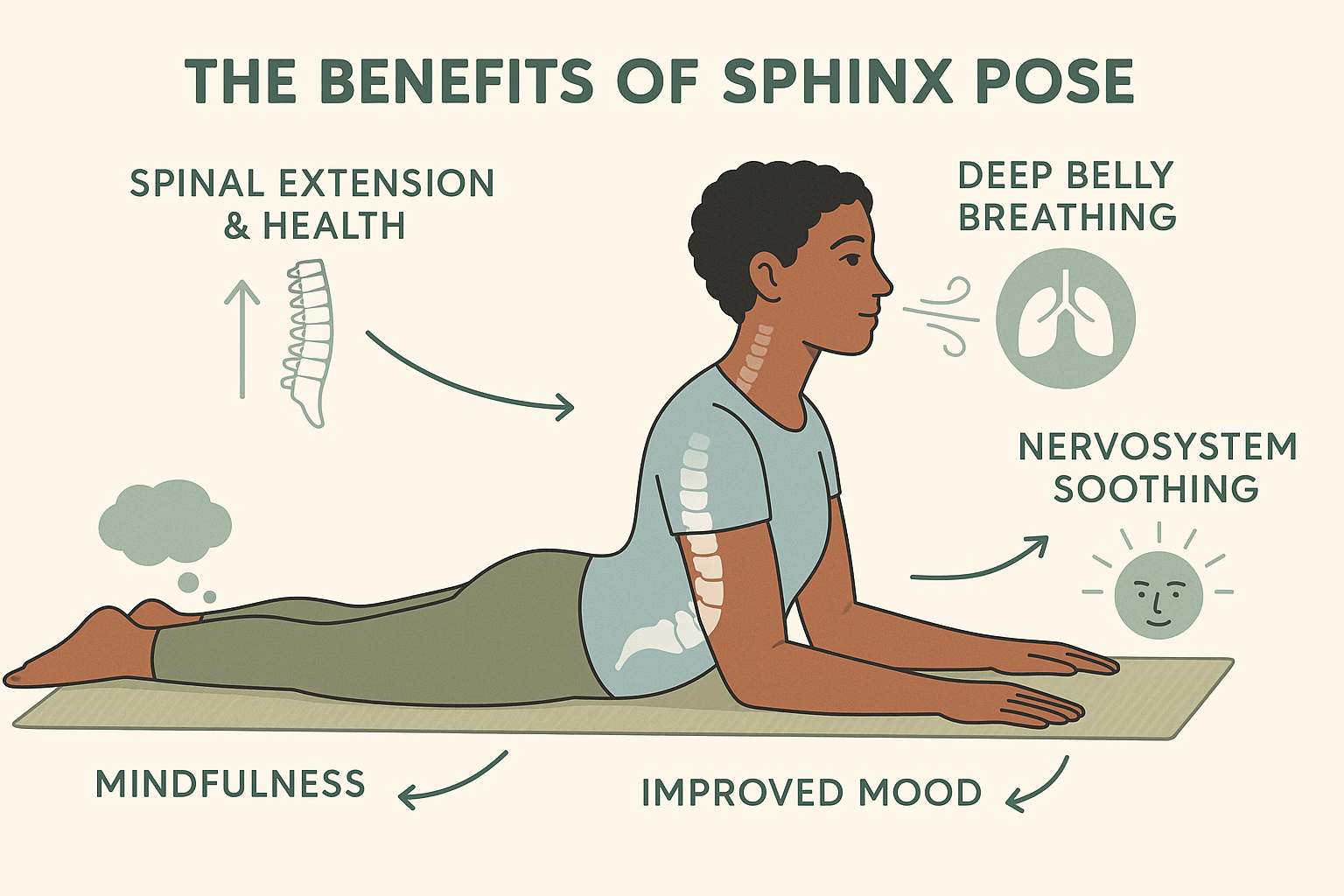Curious about the sphinx pose and its incredible benefits? Whether you’re new to yoga or looking to deepen your practice, this gentle backbend can make a real difference in your flexibility and overall wellness. In this guide, we’ll break it down step by step, explore the unique advantages it offers, and share tips to help you practice safely at home. Discover why this posture is a favorite for building strength, relieving tension, and preparing the body for deeper backbends.
Brief Overview
The sphinx pose blends gentle backbending with mindfulness, making it ideal for easing tension, improving posture, and supporting spinal health. Accessible to all levels, it helps relieve lower back discomfort while fostering both strength and relaxation. With mindful alignment and simple modifications, it’s a beginner-friendly posture that also promotes stress relief. Practicing sphinx regularly enhances flexibility, supports better movement, and cultivates a lasting sense of wellness.
TL;DR
- Gently improves spinal flexibility and relieves back pain.
- Combines physical strength with mental calm through mindful breath awareness.
- Safe alignment and modifications make it accessible to all poses in yoga sequences.
- Strengthens the spine, improves posture, and prepares for deeper backbends.
- Encourages daily meditation, emotional clarity, and relaxation.
Origins and Mindful Practice
Sphinx has become a cornerstone of modern yin yoga, uniting gentle backbending with mindful awareness. While the name nods to the Egyptian sphinx, the posture itself is a modern adaptation rooted in Hatha traditions and refined in yin and restorative yoga classes. Its mindful approach echoes teachings from Patanjali, which emphasize steadiness and ease in asana practice.
How to Do Sphinx Pose Safely
Correct alignment ensures that pose sphinx strengthens the spine without strain.
Step-by-Step Guide
- Lie on your belly with legs extended behind you.
- Place elbows under your shoulders, forearms parallel on the floor or mat.
- Spread fingers softly, pressing forearms down as you lift the chest.
- Draw shoulders away from ears and lengthen the neck.
- Engage the lower belly lightly to protect the lower back.
If your back feels compressed, move elbows slightly forward or use a folded blanket under your forearms. Breathe deeply, expanding the chest with each inhale and grounding the pelvis on each exhale.
Modify Sphinx for Comfort and Support
When exploring sphinx pose benefits, many practitioners discover that slight adjustments make a big difference. To modify sphinx, start with props like a folded blanket under the forearms or pelvis, which reduces pressure on the lower back. Another option is widening the legs for greater stability or placing yoga blocks beneath the forearms for extra lift. These small shifts stabilize the shoulders, create more space in the chest, and keep the posture safe for long holds.
Such modifications also make the sphinx stretch more restorative. Instead of focusing only on strength, you allow the pose to deliver both grounding and release. Over time, the mindful use of props makes practicing sphinx more enjoyable, especially in yin yoga sequences where longer holds are common.
Benefits for Body and Mind
The sphinx pose benefits go beyond a simple stretch. It gently stretches and strengthens the thoracic spine, shoulders, and core while reducing stiffness from daily activities. It also opens the chest, supporting deeper breathing and improving circulation. By balancing the body through subtle activation, it reinforces better posture and eases back pain.
On the mental side, this pose encourages calm by activating the parasympathetic nervous system. Settling into stillness during the posture often feels like a moving meditation, helping quiet the mind and reduce stress.
Modify Sphinx for Progression Into Deeper Backbends
As you advance in your practice, you can also modify sphinx to prepare for stronger poses. Straightening the arms gradually transforms it into Seal Pose, creating an arc that preps the lower back for backbends sphinx such as Cobra Pose, Upward Dog, or Wheel. This careful progression allows tissues to adapt, reducing risk of injury while amplifying flexibility gains.
Used in this way, poses sphinx become a bridge to more demanding postures. By patiently working with the sphinx stretch, yogis build the awareness and resilience needed for long-term progress. The benefits sphinx delivers are cumulative, teaching you that consistency, patience, and mindful breathing are just as important as intensity.
Common Mistakes and Adjustments
- Keep elbows under or slightly ahead of shoulders to avoid compression.
- Avoid pushing the head forward; keep the neck long.
- Relax glutes and jaw while holding the pose.
- If discomfort persists, release and reset on the mat.
The sphinx pose benefits the body in practical ways—it strengthens the spine, stabilizes posture, and eases lower back discomfort—while also fostering mental clarity and emotional balance. By practicing it regularly, you’ll discover how a gentle yoga pose can be both grounding and empowering. With consistent practice, Sphinx not only supports wellness today but also creates a solid foundation for deeper backbends tomorrow.

